
The site has recently been updated and this page has been deprecated, there may be an updated version available however this resource is only here for historical purposes, it may eventually be removed
To provide optimal coverage and to meet differing capacity requirements, mobile network operators primarily build masts with multiple, usually two or three, radio sectors. Some omni-directions masts which have only one sector do exist still.

Phone Mast Sectorisation Video
Triple sector masts are ubiquitous in both urban and rural areas, due to their relative simplicity and ability to provide good coverage, capacity and flexibility.
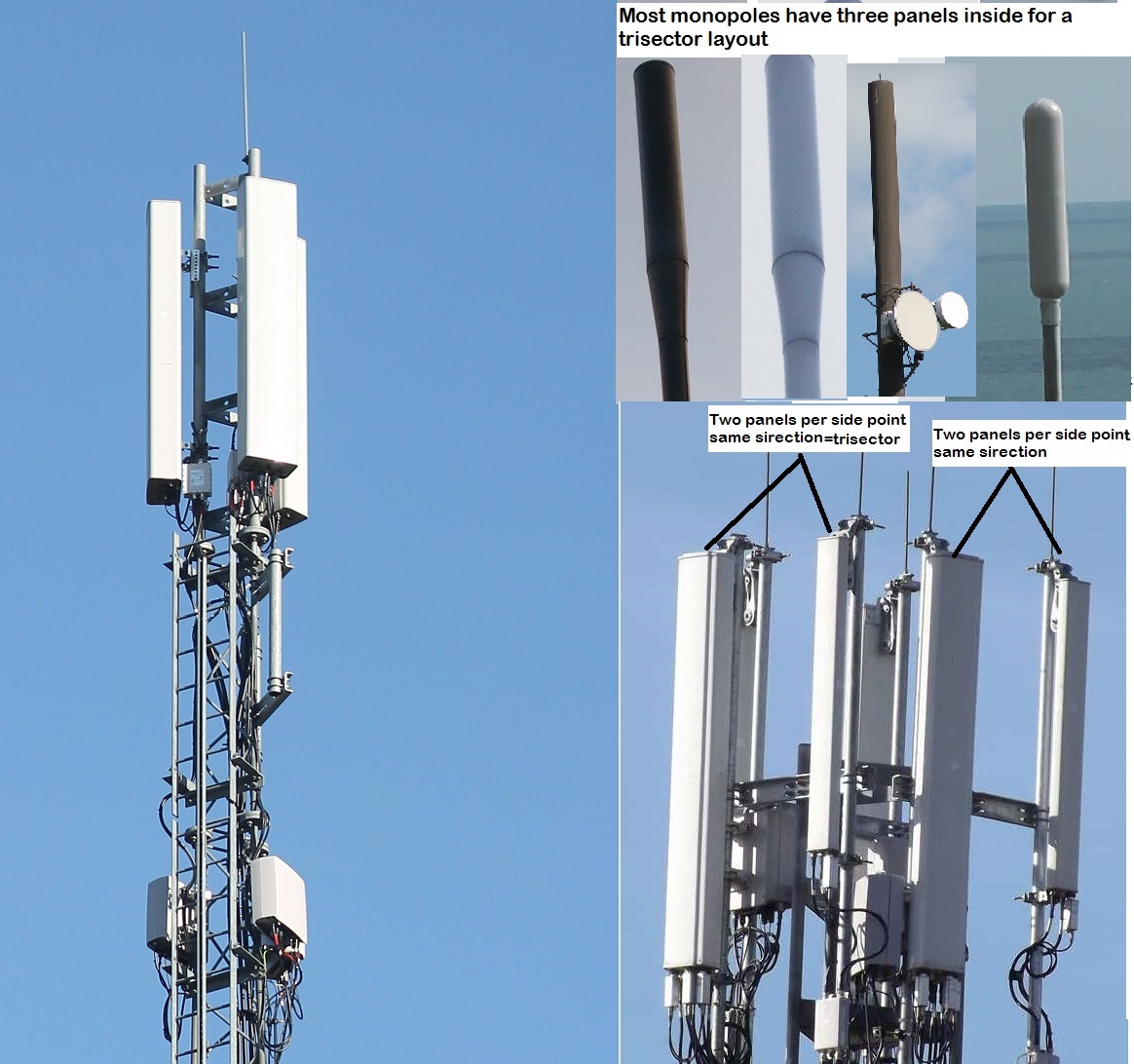
These are all trisector masts. The one on the left is, perhaps, the most obvious because three antenna panels are visible. However, the vast majority of monoples have three panels and thereby are trisector too. Some masts have multiple panels per side of the mast, which can make things a little confusing. As long as the panels on a side of the mast are pointing the same direction, they can typically be thought of as one panel. Therefore, the bottom right example above is still a triple sector mast, despite having six panels. For examples where multiple panels per side affects things, look at the complex setups at the bottom of the page. |

This is the radiation pattern you get from mounting three of the 65 degree panels with maximum separation between them. You can see that we now have signal in every direction. However, in some areas it is a little bit weak.
|

In most areas, there are not just single, solitary, masts. This means that the main beams of the sectors can be aligned to produce continuous coverage in an area. |
Tri sector masts are generally great, but for certain situations, another approach is required.
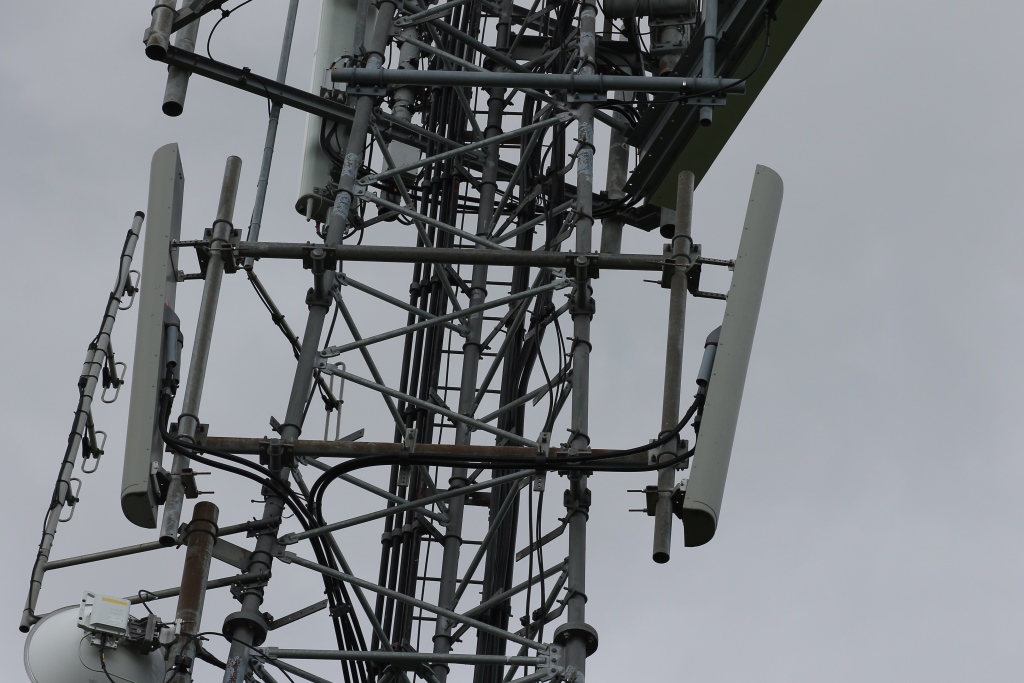
It is possible to see that this mast only has two panels, not three like seen above; this is a bisector mast. |
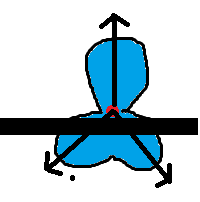
This shows a trisector pattern with a road passing nearby. A trisector setup is potentially inefficient here because one sector does not cover the road at all and the other two sectors are pointing diagonally at it=sub optimal coverage. |
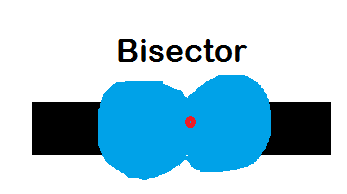
Here is the radiation pattern for a bisector mast with directly opposing panels. It is clear how much better it serves the road compared to the trisector. However, trisector masts are still regularly used because of communities and areas that need good coverage perpendicular to the road. |
Bisector masts are almost always used for railways due to the straight nature of railtracks and lack of requirement to serve perpendicular areas. |
||
These are quite rare nowadays, due to their limited range and capacity. However, are still sometimes seen in rural areas.
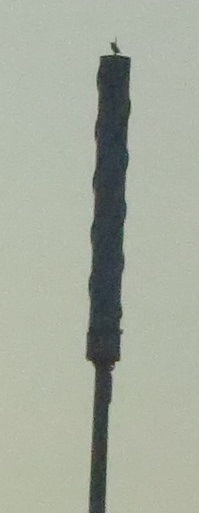
A Vodafone 2G 900MHz Omni-directional Monopole. |
Another 2G 900MHz omnidirectional mast, often called a pitchfork. |

The radiation pattern is equal on all sides due to the omni-directional nature of the antennas. |
A Six Sector mast on the M62. These provide a pattern not too different from the single sector omnidirectional mast. Having users on six split between six sectors slightly increases capacity, though not by a factor of two (having such overlap between the beams has counter effects). |
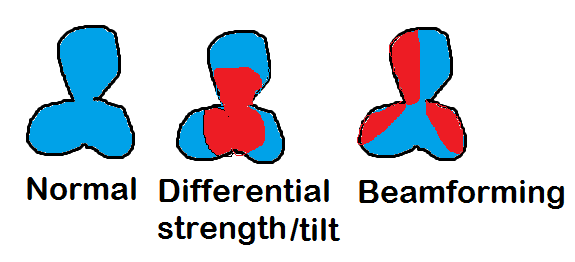
A trisector mast's beams can be 'split' to effectively produce six sectors. In the case of the middle example, differential tilt can be achieved, where two panels are fitted on the side of the mast: one pointing up/vertical and one pointing down (slanted). The panel pointing downwards will only serve those close to/below the mast, whereas the one vertically orientated those further away. This splits the sectors.
With beamforming panels, it's possible to beamform, producing six sectors aswell. |